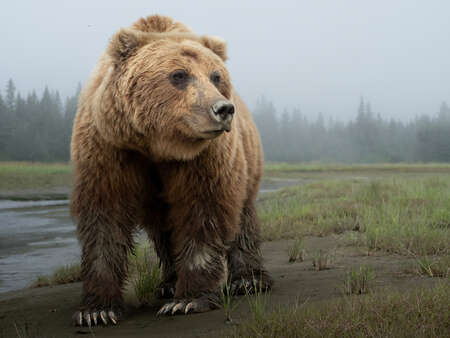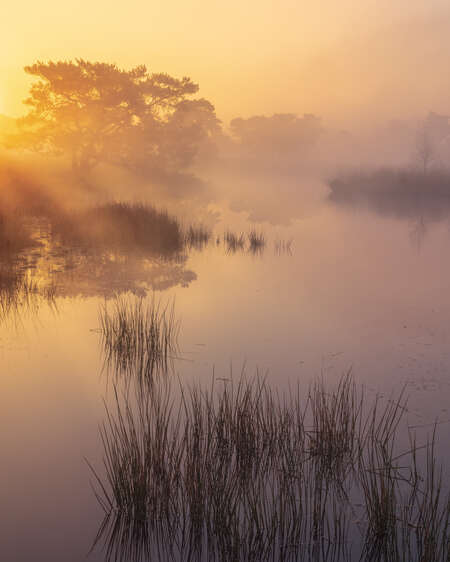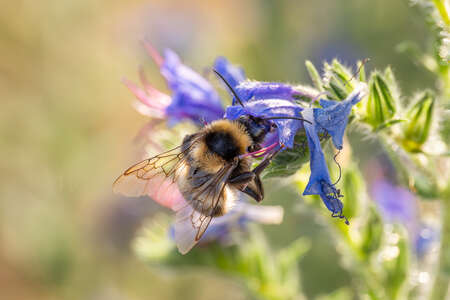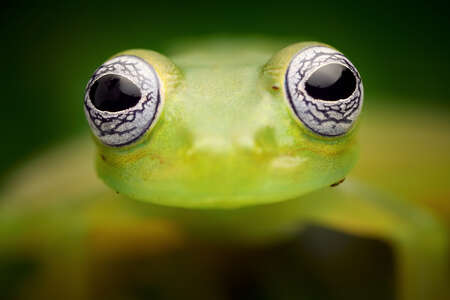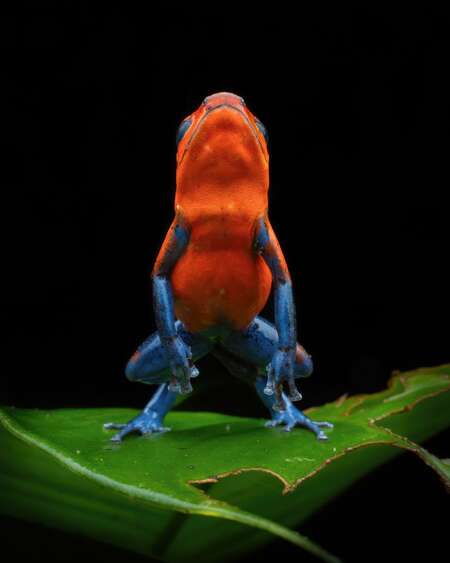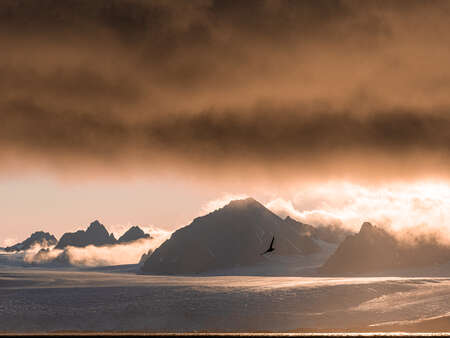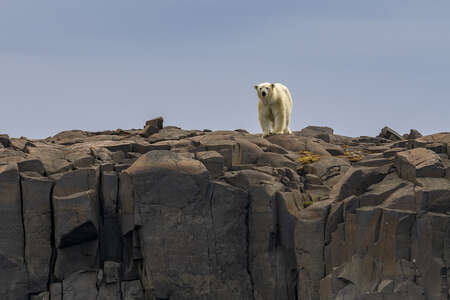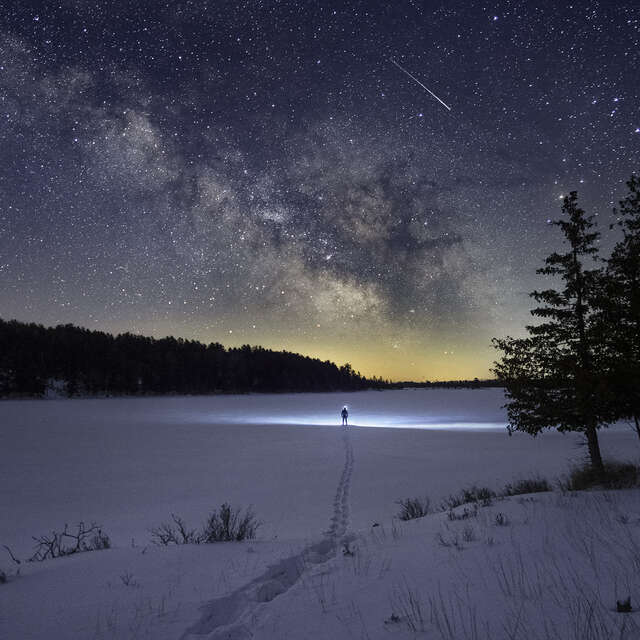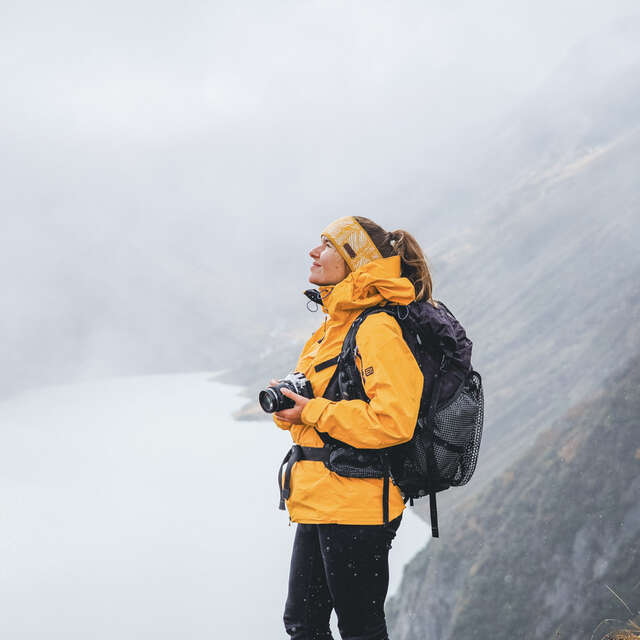Adrian Truchta - Poland
I love to shoot jumping spiders when they’re taking a look around. This photo shows one’s first, slow, observant steps around her moss nest at the beginning of a sunny day with morning dew.
When you see this situation and try to catch it, you must think about several things:
- Balance the sunlight falling on your model and the background - this is an easy way to burn out details, so make sure you observe the scenery.
- When your model is slow-moving, take a look around for a nice background - one step to the right or left and you could have lovely bokeh!
- Composition: when you are shooting a scene with a jumping spider, leave space where they’re looking - here it’s the top right corner of the photo. Thinking about composition like this can give your photo an incredible dynamic feeling.
I love this photo, because it shows the essence of jumping spiders’ beauty and how they observe the area around them. One of the most amazing sights on the planet! Remember: it’s nature that creates these incredible scenarios – OM SYSTEM helps you to catch it!
Annais Pascual - Spain
For me, this image sums up the behavior of puffins: on that day many individuals were making this particular gesture by opening their beaks, stretching their throats and shaking their bodies.
I read later that it seems to be related to territorial marking, and reinforcing their boundaries. The other individual is flapping its wings to remove the salt from its plumage, a gesture the puffins did repeatedly. I think the combination of colours, the framing that partially shows the birds’ surroundings, and the scale of the birds in the frame makes it one of my favorites in my entire career.
Arthur Lefo - USA
This image was captured during an intimate moment spent with a mother brown bear, known as “The Old Sow”, on the coast of Lake Clark National Park by OM System Ambassador and bear viewing guide Arthur Lefo. After spending hundreds of hours with this gorgeous bear and her two spring cubs over the course of the summer, she became so comfortable and trusting with the presence of humans that she would even stop to nurse her little ones by a group of bear viewers several times. This wonderful encounter showcases the beauty, fierceness, and fragility of these incredible beings through the eyes, fur, and claws of this beautiful mother. A close encounter that makes you feel the powerful presence of these animals almost as if you were there yourself.
Guido Van De Water - The Netherlands
One of the best things about nature is the peace and calmness that you experience when you go out for photography early in the morning. Most of the time I am out there completely on my own breathing in everything that nature has to offer. The best mornings are the once where atmospheric conditions make you feel like you are in the middle of a fairytale. This is exactly what happened when I shot this image on my favorite spot in the Netherlands. Everything came together at this exact point. Light, fog, composition and even the water level in the little lake was perfect. This is what nature is all about for me. It is relaxing, surprising, amazing, always there and free.
Michel Maitre – France
The hot days of June meant vegetation was already yellowing – but on the way out of my village, I noticed a perennial flowering plant that stands out from the moor by its lofty shape and its graceful blue flowers. It is the 'viperine' that was in the spotlight that evening, as many bumblebees came to feast on its precious nectar.
I enjoy using the M.Zuiko 90mm macro lens because it allows me to comfortably bring my subjects closer without getting too close, so as not to scare them or cast an unwanted shadow. The gesture requires a lot of speed both for the camera and for the shot because the subjects never linger, and their movements are so random! The end of the day also gives me the golden colours of the setting sun, which will bring a softness to the background of the image – plus the subject will stand out thanks to the exceptional sharpness that this fabulous lens gives me.
Petr Bambousek – Czech
During my photography trips I search for animals both day and night, and one of my favorite subjects is night macro photography. Accompanied by my camera and torch light, I search for amazing species like spiders, katydids, snakes, lizards or frogs.
I found this beautiful frog resting on the edge of a flower in the garden of my hotel in Costa Rica. To create this picture I took a step back and avoided a more classic portrait. I used the decorative lights from the opposite building as a background, and a subtle diffused flash to lighten the frog. I am really happy with the result – and honored that this picture was recognized and awarded among 189 000 submissions of Nature Conservancy Contest 2023, winning the 2nd place in Amphibians and Reptiles Category.
Rafael Steinlesberger – Austria
My favorite capture of 2023 is without a doubt this strawberry poison frog (oophaga pumilio) caught in the middle of a jump. A great photo often involves a fair amount of luck: in this case I happened to press the shutter just in the right moment, resulting in this unique pose. This frog species is perhaps most famous for its widespread variation in coloration, comprising approximately 15 – 30 different colours. Its alternate name "blue jeans poison frog" fits quite perfectly for this specimen considering this specific colouration.
Ryan Dale – UK
"This spider is a species I have always wanted to photograph, but never thought I would even find. During a family holiday I convinced everyone to let me have an hour to myself with my camera, and almost immediately spotted this little spider. It was a hot sunny day, and the spider was as active as they can be, so I spent the entire hour watching and waiting patiently for it to hopefully sit still long enough for a photo. With less than five minutes left before I had to leave, I finally got this shot. It's not my most perfect photo, but the story behind it and the patience that went into it make it my favourite."
Sandra Linnell – Sweden
On the 24th of August we boarded M/S Nordstjernen, the ship where we would spend the next four nights, taking us along the coast of the island of Spitsbergen, Svalbard, and up as far as 80° north. We sailed out in silent and foggy weather conditions but after dinner, it started to get more windy – and when it was time to go to bed the rain was pouring down. We went to sleep in our pitch black, windowless cabins, setting the alarm to wake us at 6am as we crossed our fingers for a weather change. Wind and rain was not what we had hoped for.
After just a few hours of sleep the alarm beeped and we dragged ourselves up, even though we were really tired. Not knowing what to expect we climbed the stairs as fast as we could and when we stepped out on deck we were literally blinded by the light. The low sun was heating up the air above the glaciers and a golden mist was rising between the characteristically sharp and pointy mountains of Spitsbergen. We had to pinch ourselves and scream with pure joy as we unloaded our camera gear. This was going to be just the adventure we hoped for!
Scott Portelli – Australia
This year I visited Svalbard, one of the last remaining Arctic strongholds for Polar bears. I ventured into the high Arctic in search of these impressive hunters. As the climate has a dramatic impact on their hunting grounds, we see these bears adapting to the diminishing ice and venturing on to the rocky islands. A master of stealth, a large male appears over the horizon and stands on high to survey his surroundings.
Being in the presence of these magnificent polar specialists is a privilege to say the least, and in the Arctic, I am always working from a floating platform, so there are challenges that come with shooting in this part of the world. My go-to lens is the M.Zuiko 300mm F4.0 IS PRO because of the extended focal length and precise stabilisation: a perfect combination for photographing these elusive subjects.
I have spent the past decade working in the polar regions, and despite the harsh environment and challenging conditions, it has to be one of the most rewarding places to photograph nature. Things happen unexpectedly and you are often at the mercy of the elements, so when these pivotal moments happen, you appreciate having the right equipment.


